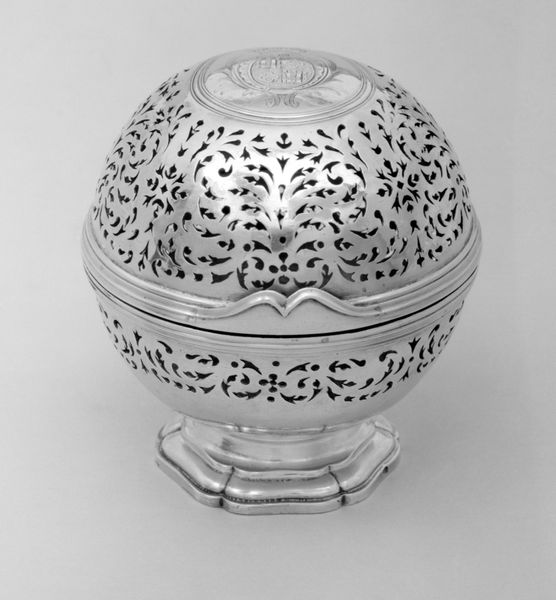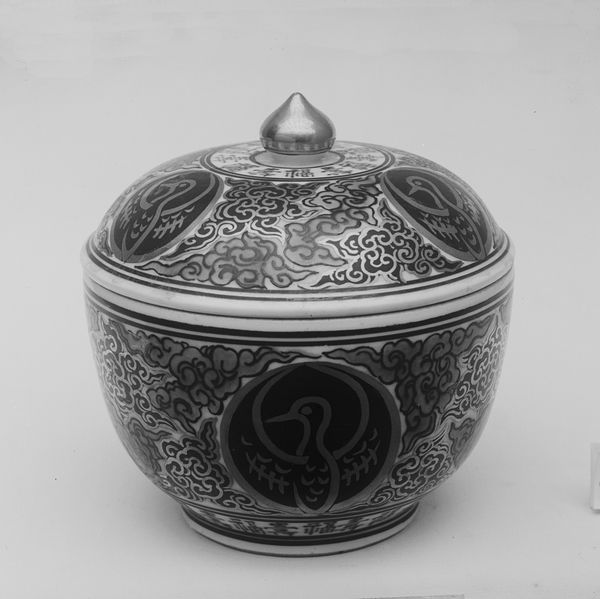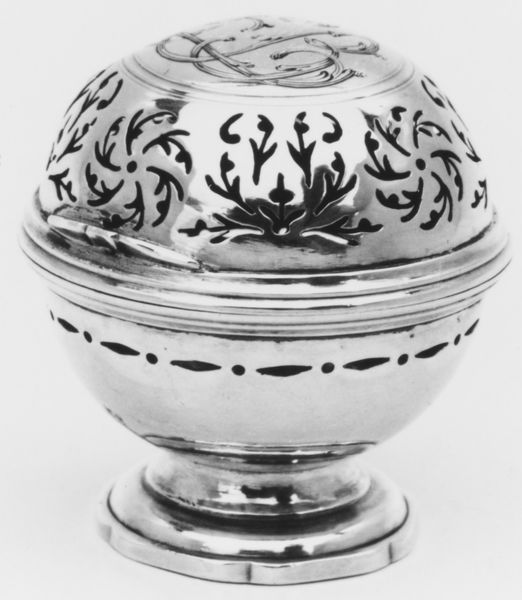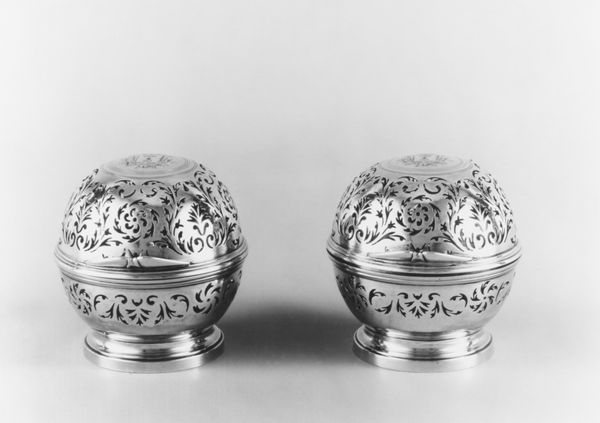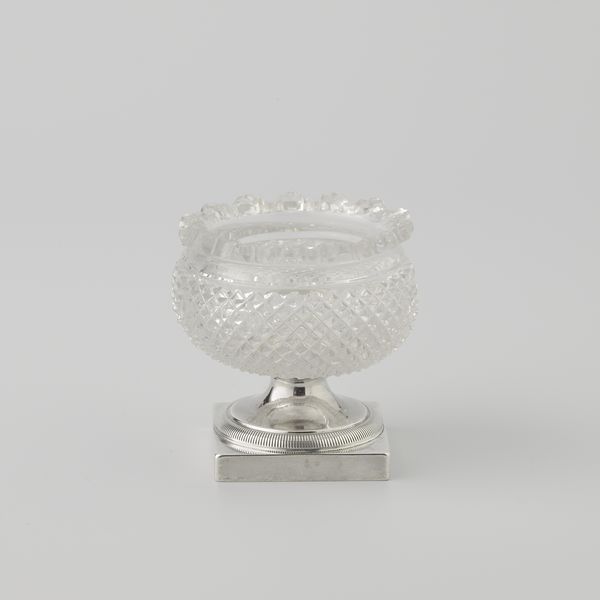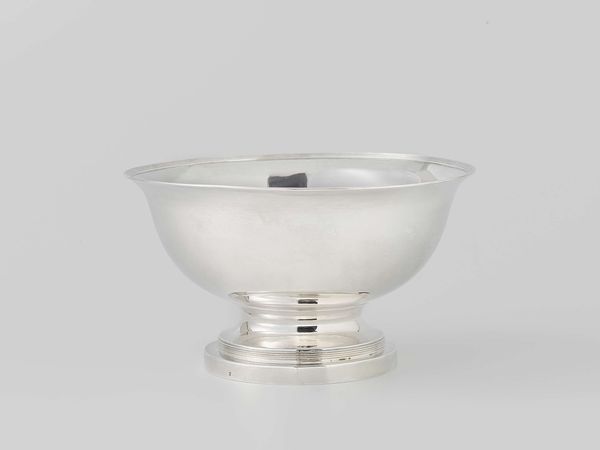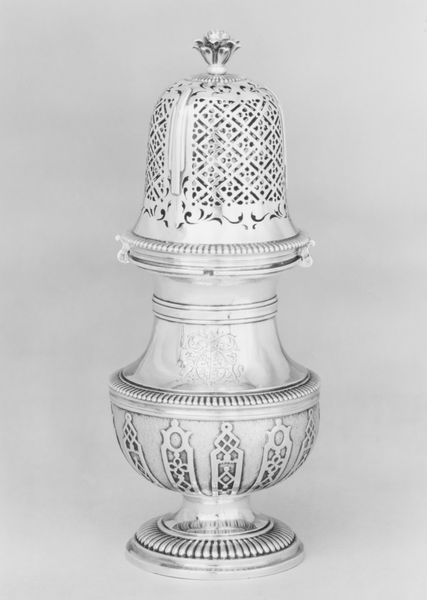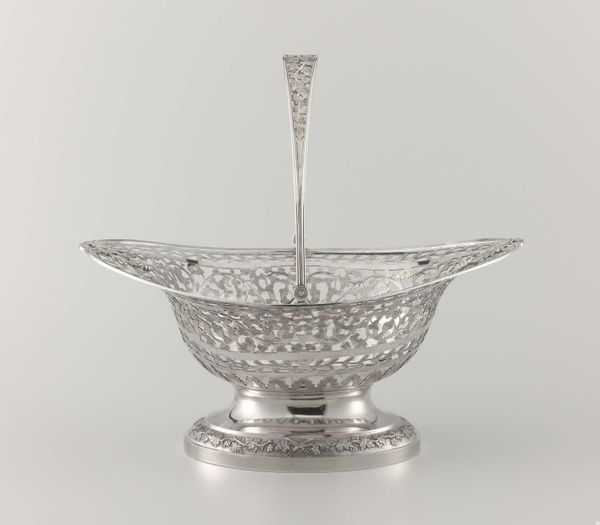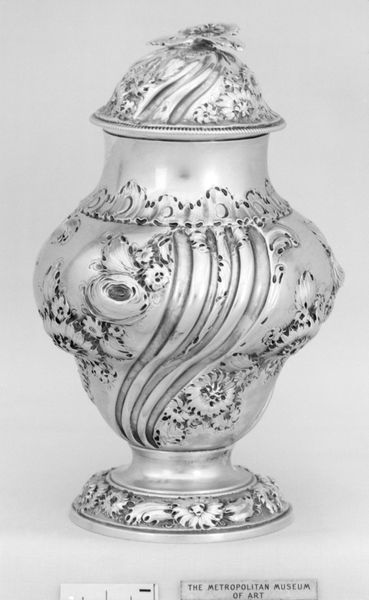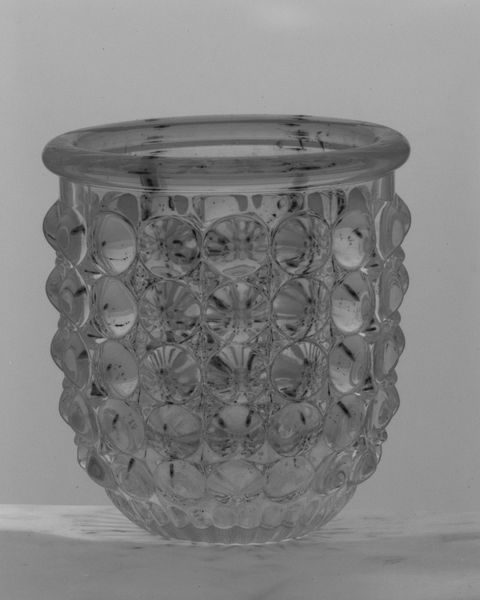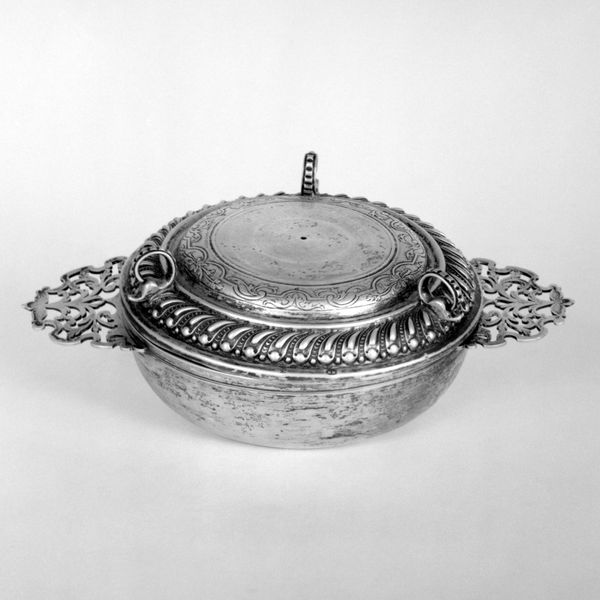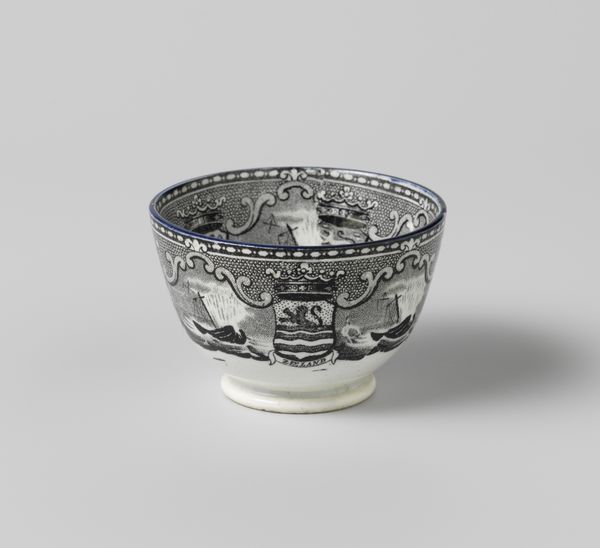
silver, sculpture
#
silver
#
baroque
#
sculpture
Dimensions: Diameter: 3 3/4 in. (9.5 cm)
Copyright: Public Domain
Curator: Look at the incredible delicacy of this piece. It is titled "Sponge box" and was crafted sometime between 1720 and 1730. The medium, of course, is silver, and it resides here at The Met. What's your immediate response? Editor: Ethereal, yet grounded. It’s primarily the contrast between the intricate openwork of the lid and the smooth, substantial base that captures my attention. The craftsmanship evident in the symmetry and detail is truly striking. Curator: Absolutely. And thinking about the context in which it was created: luxury items like this "Sponge box" spoke volumes about the owner's wealth and social standing. Silver, a precious metal, represented not just economic power but also the skill of the silversmiths who transformed raw materials into such ornate objects. Editor: Speaking of the objecthood itself: the shape is quite fascinating, almost a globe perched on a pedestal. It commands attention with the meticulously patterned dome, and the tiny hinges suggest both refinement and functionality, the marriage of aesthetic design with pure, applied use. I would like to analyze that ornament more closely; these small details offer structural clues about production design. Curator: The pattern is exquisite—very much of the Baroque style. Consider the labor involved in piercing and shaping that silver with such precision. Each perforation had to be meticulously planned and executed. And the fact that it's a container for a sponge raises all sorts of interesting questions. What social practices are surrounding bathing that requires silver adornment? What does it reveal about 18th century daily rituals? Editor: Indeed, and thinking more closely about material transformation here: from raw silver ore through processes of smelting, refining, and then into these detailed techniques involving hammers and other tools of manufacture—tracing such material and artistic lineages is fundamental. Moreover, who designed the object? Where did the creator learn such craft? Curator: Precisely! Silver was sourced through international trade, and the production of such objects was tightly controlled by guilds—limiting production. Artisans had to undergo rigorous training to master their craft. When viewed through this lens, what first seems to be purely decorative becomes a narrative of social status and complex labor networks. Editor: For me, that web of design, from visual syntax to the transformation of substance and then production, informs any close viewing—art doesn’t appear from nothingness, which is vital in its analysis. Curator: Yes, there is a network that this reveals, extending from design through making and then beyond that: the user and his or her community. Considering all that illuminates the historical meaning of an item that we might too easily dismiss as being pretty. Editor: Exactly, so while "Sponge box" initially suggested certain optical properties to me, in terms of light and shadow, considering design through the material forces that form and ultimately bring that vision to fruition transforms our understanding.
Comments
No comments
Be the first to comment and join the conversation on the ultimate creative platform.
